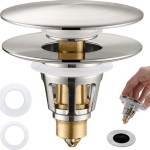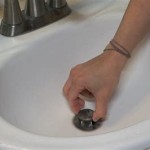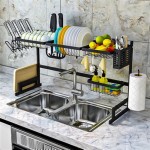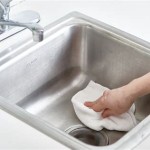How to Hook a Hose to a Sink
Connecting a hose to a sink faucet can be a useful task for various purposes, such as watering plants, filling buckets, or cleaning outdoor areas. While the process may seem straightforward, there are nuances and safety considerations to keep in mind. This guide will walk you through the steps involved in hooking a hose to a sink faucet, ensuring a secure and leak-free connection.
Choosing the Right Hose and Connector
The first step involves selecting the appropriate hose and connector for your needs. The hose should be made of durable material, resistant to kinking, and have a length suitable for your intended use. Common hose materials include rubber, vinyl, and braided steel. The diameter of the hose should match the size of the faucet connector.
There are various types of connectors available, each designed for specific purposes. For sinks, you will typically need a
hose bib connector
, which consists of a threaded end that screws onto the faucet and a hose-end connector. Some hose bib connectors have a built-in shut-off valve, which provides an additional layer of control over the water flow.Connecting the Hose
Once you have the right hose and connector, follow these steps to connect them to the sink faucet:
-
Turn off the water supply:
Locate the shut-off valve for the sink and turn it clockwise until the water stops flowing. This will prevent water from spraying out during the connection process. -
Attach the hose bib connector:
Screw the threaded end of the hose bib connector onto the faucet outlet. It should thread on smoothly and without excessive force. -
Connect the hose to the connector:
Attach the hose end of the connector to the hose. Most connectors have a simple push-on design, while others may require a threaded connection. Make sure the connection is secure and leak-free. -
Turn on the water supply:
Slowly turn the shut-off valve counterclockwise to allow water to flow back through the faucet. -
Check for leaks:
Carefully inspect the connection points for any leaks. If you notice any leaks, tighten the connections or replace the connector if necessary.
Additional Tips and Safety Precautions
Here are some additional tips and safety precautions to keep in mind:
-
Use a wrench:
When connecting the hose bib connector to the faucet, use a wrench to ensure a tight and secure fit. Overtightening can damage the faucet or connector, so apply only moderate force. -
Avoid using worn-out or damaged hoses:
Replace worn-out or damaged hoses as they can leak and cause water damage. -
Inspect the hose regularly:
Check the hose for kinks, cracks, or leaks, and examine the connector for any signs of wear or damage. Replace any faulty components immediately. -
Be mindful of water pressure:
If the water pressure is too high, it can damage the hose, connector, or even the faucet. In such cases, you may need to install a pressure regulator to reduce the water flow. -
Disconnect the hose after use:
Always disconnect the hose from the faucet after use to prevent water damage and minimize the risk of leaks.
By following these guidelines and safety precautions, you can ensure a safe and efficient connection of your hose to your sink faucet. Remember to always handle water with care and prioritize safety when working around water sources.

Easy How To Hook Connect A Hose Faucet Sink Yourself Youtube

How To Use Garden Hose With Indoor Faucet

How To Attach A Garden Hose Kitchen Faucet Easy Diy

How To Hook A Garden Hose Your Indoor Faucet De Ice Deck Thaw Containers Raised Beds Early

How To Attach A Garden Hose Kitchen Faucet Easy Diy

How To Build An Outdoor Sink Hometalk

How To Hook A Garden Hose Up Sink Faucet Claber Youtube

How To Connect Faucets With Supply Tubes The Home

How To Connect Faucets With Supply Tubes The Home

Connecting Hose To Kitchen Tap Youtube







